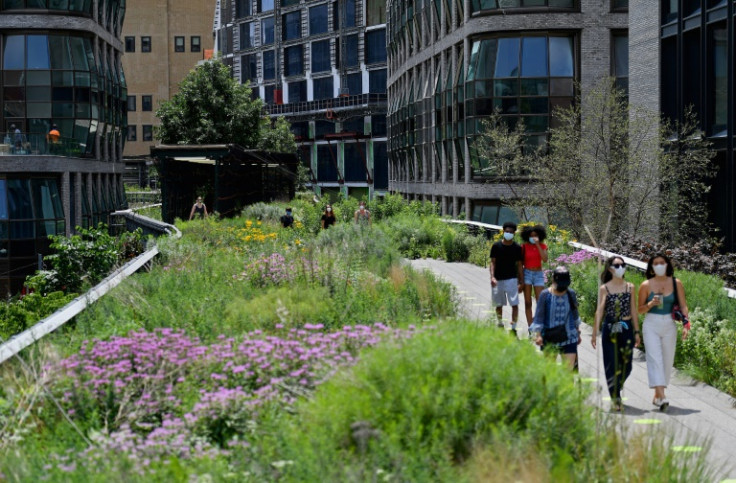Frequent Visits To Green Spaces Associated With Lower Use Of Prescription Drugs: Study
KEY POINTS
- Visiting green spaces is linked to less use of drugs for conditions such as anxiety, insomnia and depression
- The results were most noticeable in people who visited green spaces 5 times a week
- The results of the study highlight the importance of access to green spaces
A new study suggests that living near abundant green spaces is not enough, rather, frequent visits to such spaces bring down the use of certain prescription drugs.
The study, published in the journal Occupational & Environmental Medicine, found that visiting green spaces like parks and gardens is linked to less use of drugs for conditions such as anxiety, insomnia, depression, high blood pressure, and asthma.
Led by researchers from the Finnish Institute for Health and Welfare, Tampere University in Finland, and the University of Eastern Finland, the study analyzed data from around 6,000 Helsinki residents.
"Exposure to natural environments is thought to be beneficial for human health, but the evidence is inconsistent," researchers wrote in the paper.
Data from the participants was collected on the type of medications that were consumed, the number of "green and blue" spaces visible from home, times people looked at those views, and the time they spent there or exercised in them.
Three or four visits a week, when compared with one visit a week, were linked with 33 percent lower odds of using mental health meds, 36 percent of blood pressure meds, and 26 percent of asthma meds, the study found. Unbelievably, there was a drop in the above figures by 22 percent, 41 percent, and 24 percent, respectively, for at least five visits per week, ScienceAlert reported.
"This finding is in line with tentative evidence emphasizing the importance of actual use of green space in relation to mental health, and it suggests that the same holds true for other health conditions, such as asthma and hypertension," the researchers noted.
The work here does not establish a cause-and-effect relationship. Nevertheless, the study does demonstrate that the aspect of green spaces and health is worth exploring further.
Moreover, the results of the study highlight the importance of access to green spaces.
"Mounting scientific evidence supporting the health benefits of nature exposure is likely to increase the supply of high-quality green spaces in urban environments and promote their active use," the researchers wrote. "This might be one way to improve health and welfare in cities."
Another study found that watching and listening to birds can be beneficial for mental health. And for their study, the researchers focused on an aspect that they said, "has captivated humans over the centuries and yet has received very little scientific attention: birdlife."
"Everyday encounters with birdlife were associated with time-lasting improvements in mental well-being," the researchers wrote, adding, "These improvements were evident not only in healthy people but also in those with a diagnosis of depression, the most common mental illness across the world."

© Copyright IBTimes 2024. All rights reserved.




















